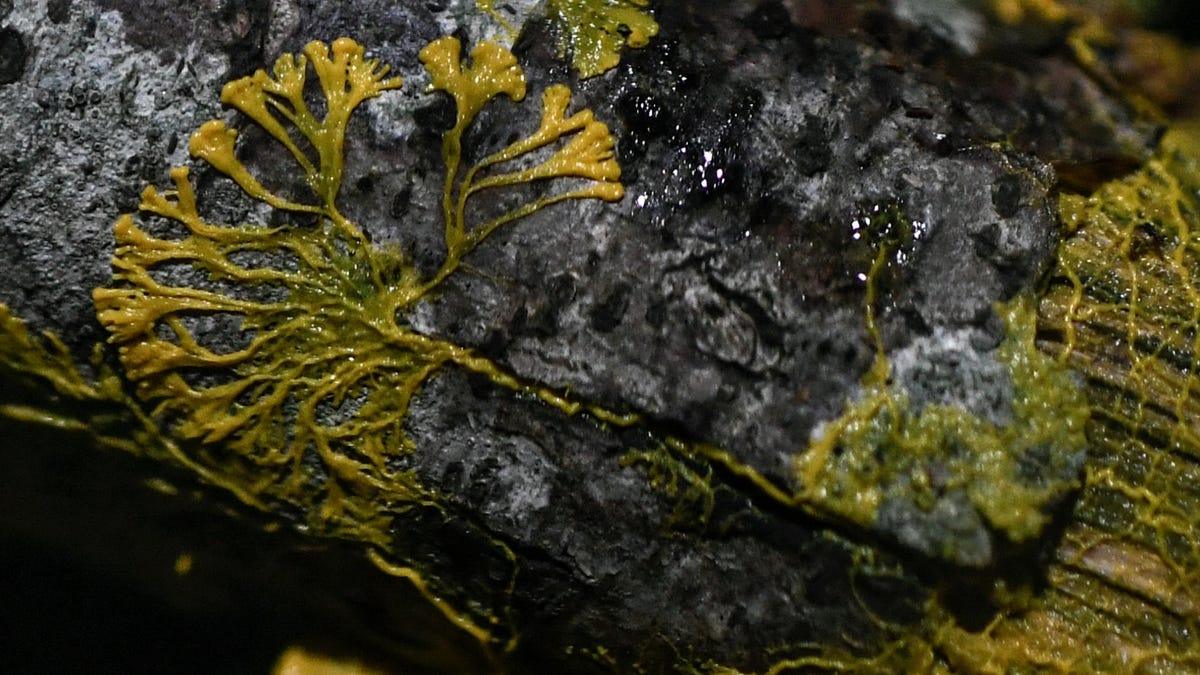Paris Zoo unveils mysterious, nightmare slime dubbed 'The Blob'
This is fine.

Physarum polycephalum, the latest addition to Paris Zoo.
The Paris Zoological Park on Saturday will begin a first-of-its-kind exhibit housing a super-weird organism: a bright yellow slime mold it has dubbed "The Blob." The gelatinous, amoeba-like creature has 720 sexes, no brain and no eyes but is "intelligent" enough to seek out food just like an animal would and find its way through a maze.
The nightmare creature is, of course, named after the 1950s Steve McQueen classic, The Blob, and I'll just say this at the top: I don't know what you think you're doing, Paris Zoo, but I have seen exactly how that film plays out.
"The blob is really one of the most extraordinary things on Earth today," said Bruno David, the director of the French National Museum of Natural History in Paris. "It's been here for millions of years, and we still don't really know what it is."
Cool, cool, cool. No doubt. I think we need to unpack this a little.
This isn't some deadly creature cooked up by a crazed scientist at the Paris Zoo. In fact, this particular slime mold is a workhorse for scientific research and forms the basis of regular study into the fascinating beasts. The creature is known as Physarum polycephalum, "the many headed slime," and is one of over 900 slime molds discovered. It's not dangerous to humans, living and feeding on leaves and logs, and it's not really a fungi or an animal.
"Slime molds belong to the kingdom Protista," explains Tanya Latty, a slime mold researcher at the University of Sydney. "It includes organisms like Parameciums, amoebas and the organisms that cause malaria.
"It's easiest to think of slime molds as enormous amoebas."
It's also a big fan of oatmeal and scientists have been using the breakfast food to test the creature's intelligence for years. In 2010, researchers even used oatmeal to represent the city of Tokyo and showed how the creature organized itself like the city's railway system.
"Slime molds are fascinating to study because they entirely lack a brain yet are capable of doing astonishingly clever things like finding the shortest path through a maze, carefully balancing their uptake of particular nutrients and balancing trade-off between risk and food quality," says Latty.
Scientists aren't sure exactly how it performs these tasks because it lacks a nervous system to tell its body how to act. Some suggest signalling might utilize electrical signals or that it can send waves throughout its branches to communicate. A recent paper demonstrated an as-yet-unknown signalling molecule is most likely responsible for the creature's complex behaviors.
And if you're hung up on the 720 sexes, well, that's just a fancy way to sell a story.
"They're not really sexes, they are mating types," says Latty. "Whether or not a slime mold can mate with another slime mold depends on its mating type which is determined by particular genes."
With a kitschy, sci-fi horror name and a handful of unusual characteristics, it's no wonder The Blob has captured the attention of social media and the internet. Some are terrified, others enthralled. Others, still, are attracted to the creature. This is 2019, after all, and we're just one step away from people wanting to do nasty things with The Blob.
Upon reflection, it appears the monster all along was... us?
Originally published Oct. 16.
Update, Oct. 17: Adds Latty comments and more context.

